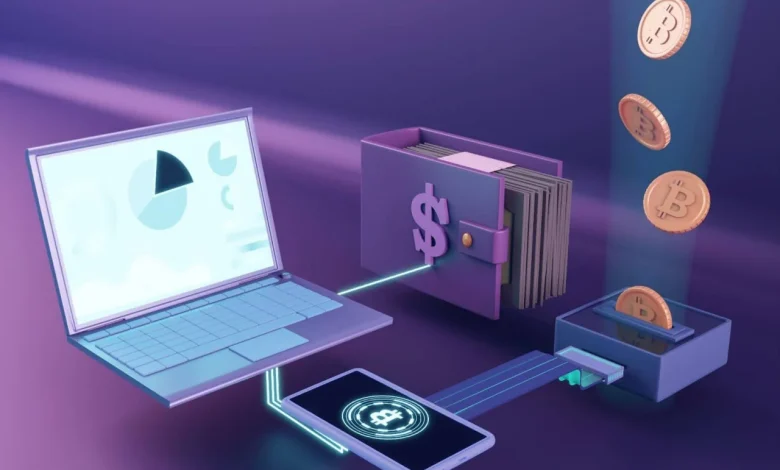Top 8 Sectors That Will Lead the Next Crypto Boom, According to Coinbase Ventures

Fintech
Coinbase Ventures is positioning itself for what it believes will be a structurally different phase of the crypto market in 2026, with a focus on projects that sit at the intersection of real-world assets, market infrastructure, privacy, and artificial intelligence.
Key Takeaways
- Coinbase Ventures has outlined eight priority sectors for 2026, focusing heavily on AI-integrated and real-world-asset (RWA) crypto products.
- The firm expects the next wave of DeFi
Decentralized Finance (DeFi) refers to a broad category of finance-related decentralized applications (dApps) built on public blockchains.
“>DeFi to combine lending and derivatives rather than repeat past yield-driven cycles.
- With 618 investments to date, Coinbase Ventures is actively deploying capital and recently backed projects including 0xbow, Zynk, ZAR and Kalshi.
The venture arm of the largest U.S. crypto exchange outlined eight core themes it plans to back next year, signaling where it expects the next wave of breakout startups and protocols to emerge.
Real-World Assets and New Derivatives at the Center
A large part of the 2026 roadmap revolves around real-world asset (RWA) markets and new forms of derivatives tied to them.
The firm expects growth in RWA-based perpetual Futures
A type of derivative contract that outlines an agreement to buy or sell a specific asset at a predetermined price on a specified future date.
“>futures, where traders can get synthetic exposure to Off-chain
Transactions on a cryptocurrency network that transfer value off the blockchain.
“>off-chain assets such as commodities, credit, or macro benchmarks through On-chain
Transactions that are recorded and verified on the blockchain.
“>on-chain instruments. Coinbase Ventures investor Kinji Steimetz said these kinds of products could become one of the main bridges between traditional finance and on-chain Liquidity
The ability to quickly convert a digital currency or token into another asset or cash without affecting its price.
“>liquidity, as they allow exposure to real-world markets without leaving crypto rails.
The idea is that as tokenization of bonds, treasuries, and other RWAs scales, demand will grow for derivatives built around them – not just spot exposure.
Specialized Exchanges, Prop-AMMs and Prediction Layers
Beyond RWAs, Coinbase Ventures is also targeting specialized trading venues and tooling instead of broad, one-size-fits-all platforms.
This includes:
- Next-generation exchanges and trading terminals built for specific asset classes or structures, rather than generic order books.
- “Prop-AMMs” (proprietary automated market makers) – new AMM
Automated Market Maker
“>AMM designs aimed at protecting liquidity providers from being picked off by sophisticated traders and MEV bots. These systems are expected to be more configurable and defensible than today’s open AMM curves.
On top of that, the firm sees an opportunity in prediction market aggregators – meta-layers that pool liquidity and odds from platforms such as Kalshi and Polymarket. Investor Jonathan King argued that a dominant interface could emerge that consolidates hundreds of millions of dollars of currently fragmented open interest, offering traders a single view of real-time event probabilities across venues.
Next-Gen DeFi: Perps + Lending + Reputation
Coinbase Ventures is also betting that the next iteration of DeFi won’t look like the yield-chasing boom of 2020–2021.
One of the themes it highlighted is integrated DeFi, where perpetual futures exchanges and lending protocols are tightly combined. Investor Ethan Oak pointed out that if traders can post collateral, earn yield on that collateral, and maintain Leverage
The practice of using borrowed capital to finance an investment or project, aiming to increase the potential returns.
“>leverage in one unified system, capital efficiency improves significantly versus today’s siloed models.
Another category is on-chain reputation mixed with off-chain data for lending. King expects to see protocols using credit histories, cash-flow data, or behavioral signals alongside Blockchain
At its core, blockchain is a digital chain of blocks, but not in the traditional sense. These ‘blocks’ consist of bits of information, and when we refer to a ‘block’ and ‘chain,’ we’re talking about digital data stored in a public database. Blockchain provides an innovative way to transfer information automatically and securely. A transaction begins when one party creates a block, which is then verified by thousands, even millions, of computers across the network. This decentralized ledger of financial transactions is constantly evolving, with new data continuously added.
What makes blockchain tamper-proof is that each record is unique, with its own distinct history. To alter one record would require changing the entire chain of millions of other records. Blockchain is grounded in three key principles: decentralization, transparency, and immutability.
“>blockchain activity to enable unsecured borrowing at scale. The market for revolving, unsecured credit in the U.S. alone is estimated in the trillions of dollars, and Coinbase Ventures believes crypto-native models can eventually compete there.
The timing also reflects a reset in the sector: total value locked in DeFi remains well below its 2021 peak, leaving room for more sustainable designs to emerge rather than just returning to the old playbook.
Privacy and Compliance Infrastructure
Privacy-preserving infrastructure is another pillar of the 2026 thesis. Coinbase Ventures sees growing developer momentum behind confidential transactions, privacy-focused assets, and zero-knowledge tooling that allow more complex activity to move on-chain without exposing sensitive information.
At the same time, the firm continues to back compliance-focused infrastructure for DeFi, including tools that help protocols operate within regulatory frameworks without sacrificing composability. Its recent investment in 0xbow, a DeFi compliance platform, fits squarely into that bucket.
AI, DePIN and “Proof of Humanity”
The last cluster of themes is centered on AI and data.
Steimetz highlighted the gap in training data for robotics and embodied AI systems, where high-quality physical interaction data is still fragmented. Coinbase Ventures expects DePIN (decentralized physical infrastructure networks) to play a role here, using token incentives to crowdsource and aggregate this kind of data at scale.
Head of Coinbase Ventures Hoolie Tejwani pointed to “proof of humanity” solutions as another area of interest – systems that blend biometrics, cryptography and open standards to distinguish humans from AI-generated agents and content. With synthetic media and bots proliferating, identity and authenticity layers are seen as critical for both consumer and financial applications.
Finally, the firm is tracking agentic AI tools that can help non-technical founders build on-chain. King suggested that by 2026, AI agents could handle tasks such as smart contract generation, security checks, deployment, and monitoring – effectively lowering the barrier to launching crypto-native products.
One of the Industry’s Busiest VC Arms
Coinbase Ventures has been one of the most active investors in the sector since its launch. According to PitchBook data cited in the update, it has made 618 investments since 2018 and now holds stakes in 422 startups.
Recent deals include:
- 0xbow (DeFi compliance) in November
- Zynk and ZAR (payments infrastructure)
- Kalshi (regulated prediction markets)
The firm says it is already sourcing and backing teams across all eight of its 2026 focus areas and views this framework as a map of where it believes the “next breakout companies and protocols” will emerge.
The information provided in this article is for educational purposes only and does not constitute financial, investment, or trading advice. Coindoo.com does not endorse or recommend any specific investment strategy or Cryptocurrency
Cryptocurrency is a modern digital asset and method of exchange that relies on blockchain technology and is protected by cryptography, ensuring the assets can’t be forged. Essentially, cryptocurrencies serve as alternatives to traditional currencies like the euro, dollar, yen, and others. Unlike electronic bank money, the key distinction is that cryptocurrency operates in a decentralized system, with no central authority controlling it. “>cryptocurrency. Always conduct your own research and consult with a licensed financial advisor before making any investment decisions.
Author
Alexander Zdravkov is a person who always looks for the logic behind things. He has more than 3 years of experience in the crypto space, where he skillfully identifies new trends in the world of digital currencies. Whether providing in-depth analysis or daily reports on all topics, his deep understanding and enthusiasm for what he does make him a valuable member of the team.
Related stories
Next article





